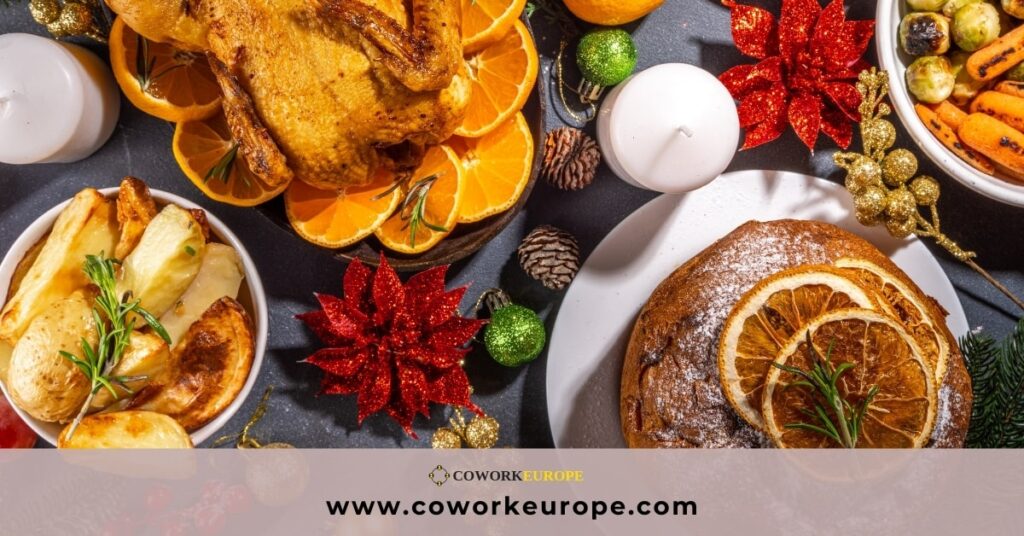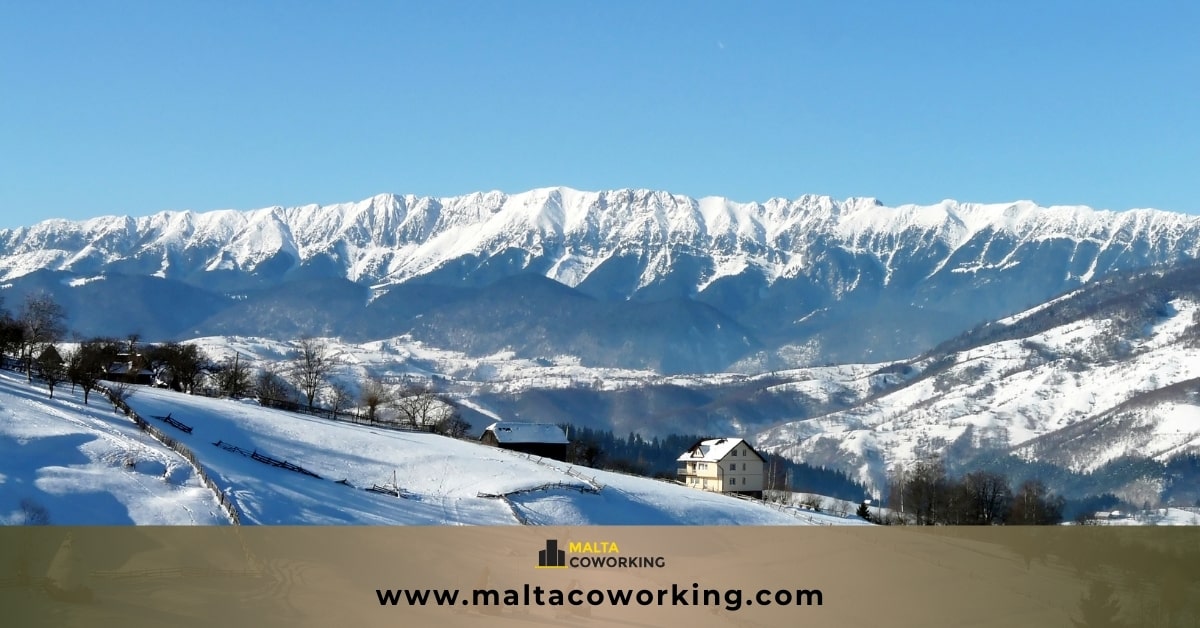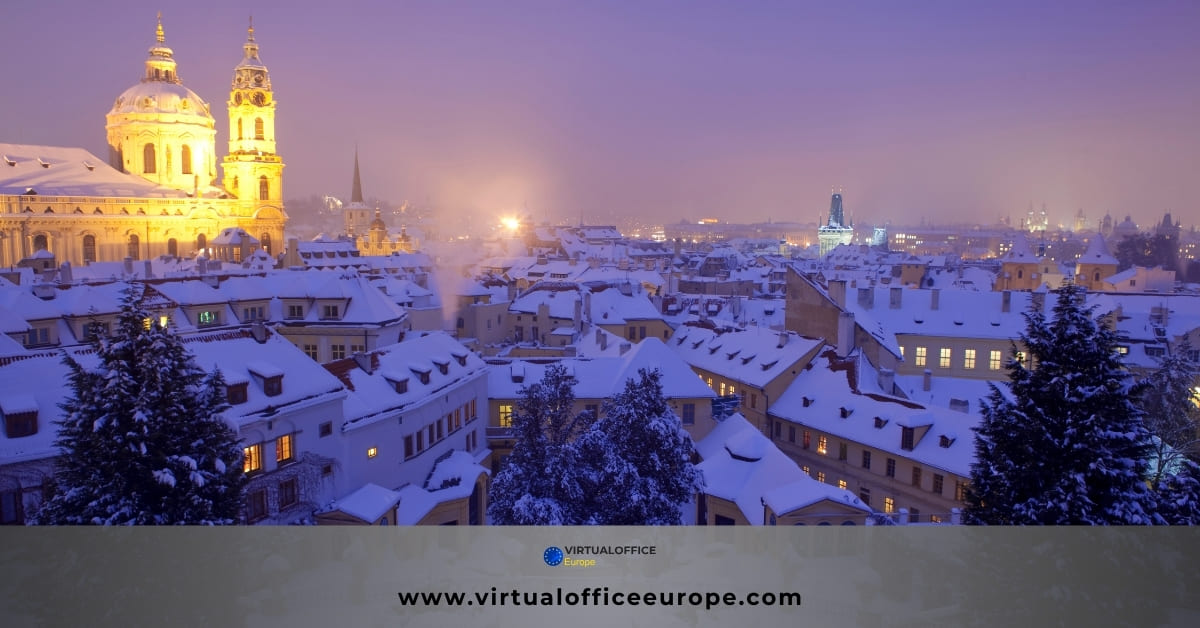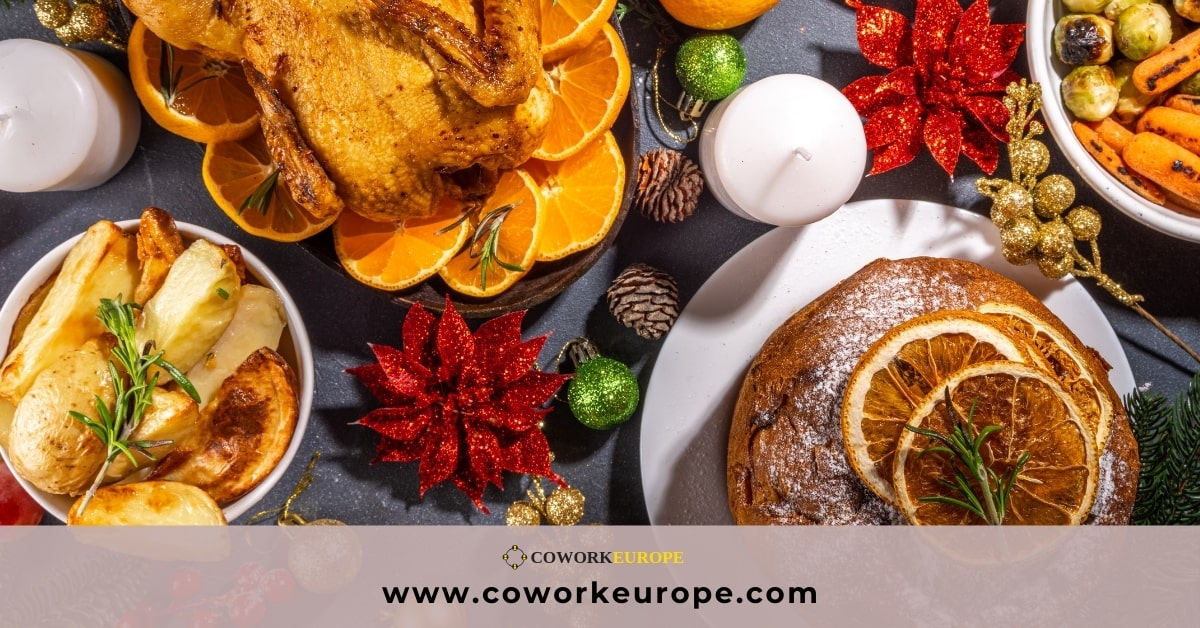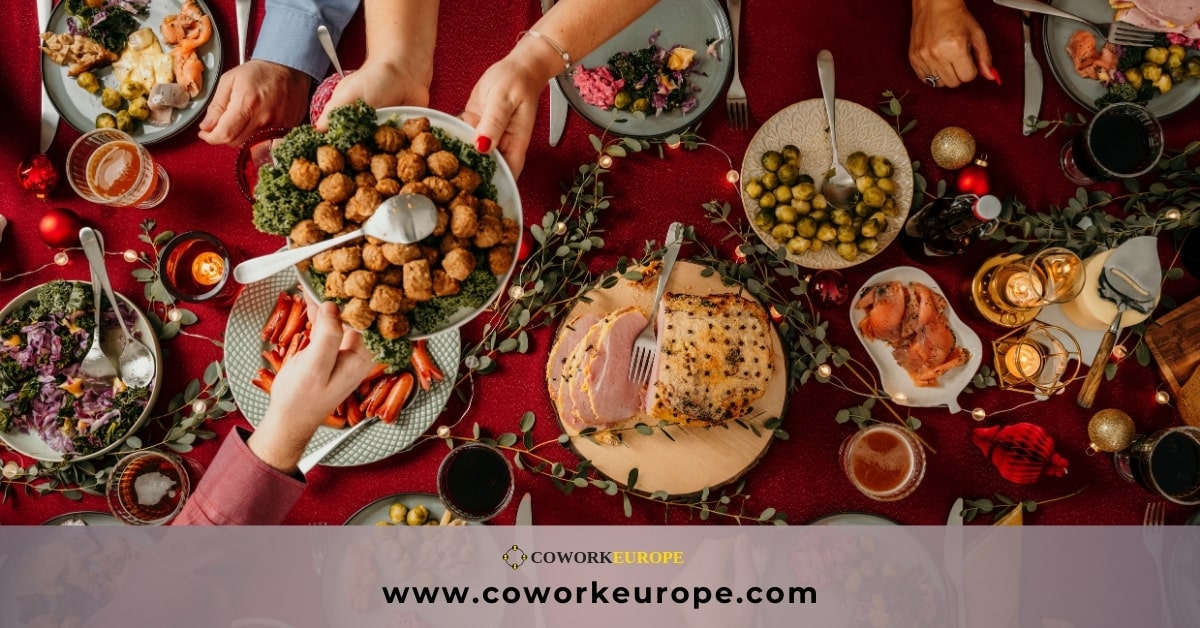New Year’s Eve goes beyond just marking the conclusion of a year and the beginning of the next; it is also an occasion to savor traditional food that are steeped in tradition. Throughout Europe, nations feature distinct dishes and culinary customs that are celebrated during the holiday season. From robust stews to delightful desserts, these classic dishes represent more than just taste; they symbolize luck, wealth, and well-being for the upcoming year.
1.Traditional Food in Spain: Grapes for Good Luck
La Nochevieja is the Spanish term for New Year’s Eve, a joyous and festive evening. Traditional food – twelve grapes—one for each midnight chime—is a necessary part of the evening. People think that eating a grape every time the bell rings will bring luck and prosperity to each month of the next year.
Although the grapes serve as a symbolic gesture, Spanish tables are also filled with an array of other traditional food. A well-known meal enjoyed on New Year’s Eve is mariscos (seafood), including prawns, lobster, and oysters, representing prosperity and plenty. Paella, a tasty rice meal loaded with seafood or meats, is frequently savored with loved ones.
2. Italy: Lentils for Prosperity
In Italy, traditional food food plays an important role in New Year’s Eve celebrations. One of the most valued traditional meals in Italy during this period is lentils, considered to attract prosperity and fortune. The tiny, round shape of lentils symbolizes coins, which is why Italians often enjoy a hearty dish of cotechino con lenticchie (a combination of lentils and pork sausage) to ring in the new year.
For dessert, panettone (a soft, sugary bread stuffed with dried fruits and candied rind) is essential. This famous Italian dessert is frequently paired with a glass of sparkling Prosecco, providing a celebratory flair to the festivities.
3. Traditional Food in France: Foie Gras and Champagne
The French have a reputation for their passion for exquisite cuisine, and New Year’s Eve, or Réveillon, is no different. In France, the night features opulent meals such as foie gras (goose liver pâté), typically accompanied by toasted brioche and a dessert wine like Sauternes. People regard this meal as a gourmet treat, symbolizing wealth and luxury.
Another traditional French dish for New Year’s Eve is oysters. Chilled and accompanied by a dash of lemon, oysters are believed to promote luck and energy in the upcoming year. Certainly, no French festivity would be truly complete without a glass of Champagne, the quintessential beverage of celebration.
4. Traditional Food in Greece: Vasilopita for Blessings
Greece celebrates St. Basil’s feast to mark the New Year, serving a unique traditional food called Vasilopita. Vasilopita is a delicate, sweet cake sometimes spiced with orange zest, traditionally made with a hidden coin inside. People believe that anyone who finds the coin in their piece will have good fortune the following year.
The dish frequently consists of meze (small appetisers), spanakopita (spinach pastry), and lamb. In Greece, the New Year’s celebration commemorates St. Basil and brings family and friends together to partake in delicious feasts and celebratory beverages like ouzo.
5. Traditional foods in Germany: Pork for Good Luck
Rich traditional foods and customs abound at Germany’s Silvester celebration on New Year’s Eve. German tradition sees pork as a sign of advancement and good fortune, so people commonly eat roast pork or sauerkraut with sausages on New Year’s Eve. They believe the pig’s forward momentum and rooting activities will bring success and good fortune in the coming year.
A traditional treat to sweeten the beginning of the year is the berliner, a type of doughnut filled with jelly. These doughnuts make a delicious dessert or snack because they are loaded with fruit jam and covered with powdered sugar.
6. Portugal: Bacalhau and Beans
In Portugal, people highly favor bacalhau, dried salted cod, as a traditional dish for New Year’s Eve. People enjoy bacalhau throughout the year, but they often prepare it with beans and olive oil on New Year’s Eve. Some people believe the dish will bring prosperity and well-being in the upcoming year.
People frequently drench these in wine or syrup and accompany them with cinnamon and sugar for a delightful, sweet experience.
7. Malta: Torta tal-Lewz (Almond Cake)
Malta, a Mediterranean island with a vibrant cultural heritage, boasts its own array of traditional foods for New Year’s Eve. People relish Torta tal-Lewz (almond cake) as one of the island’s signature desserts during the festive period. This wonderfully sweet cake combines ground almonds, sugar, and egg whites, resulting in a rich and nutty taste. It is frequently accompanied by coffee or enjoyed following a family meal on New Year’s Eve.
Moreover, another traditional food is imqaret, a deep-fried pastry stuffed with dates, cinnamon, and various spices, typically enjoyed as a sweet snack or dessert. In Malta, it’s typical to unite with family and friends for a celebration, savoring meals like rabbit stew (the national dish) and frittura (fried fish), which are ideal for the event.
8. Traditional Food in Scotland: Haggis and Neeps
In Scotland, people refer to New Year’s Eve as Hogmanay, and they typically feature a customary dish of haggis (a flavorful pudding consisting of sheep’s stomach, oats, and spices), neeps (mashed turnips), and tatties (mashed potatoes) during the festivities. This nourishing and cozy meal represents Scottish tradition and Scots frequently savor it with a glass of whisky.
Hogmanay serves as an opportunity for relatives and friends to come together and relish traditional Scottish music, dancing, and, naturally, plenty of tasty food.
Conclusions on Traditional Foods Across the Europe
In addition to welcoming a new year, New Year’s Eve also involves enjoying delectable traditional meals. They stand for wealth, health, and plenty. Whether you’re enjoying foie gras in France, bacalhau in Portugal, or lentils in Italy, the food consumed on this joyous occasion forges lifelong memories and brings together family and friends from all cultural backgrounds. There are many delectable delicacies to savour throughout this festive season, ranging from filling dinners to sweet desserts.
In Malta, like in other European countries, traditional food enriches the celebrations, offering a delightful ending to the year.
No matter your culinary heritage, allow the food to represent hope and joy as we enter the new year.

